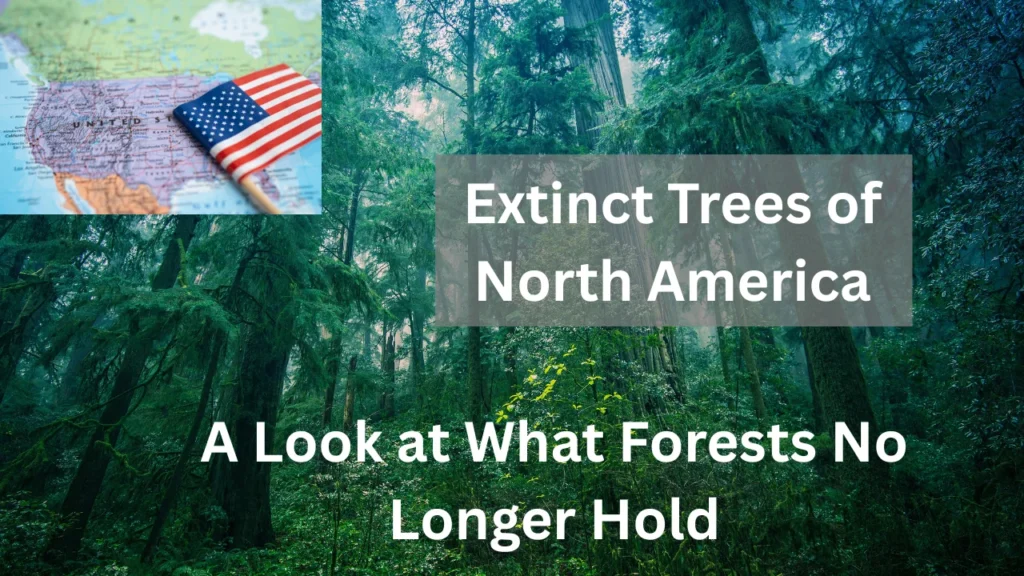Forests shape the landscapes of North America. Trees give shade, clean the air, and support thousands of life forms. But over time, some tree species have disappeared completely. These lost trees leave behind stories of changing climates, disease, and human influence.
Understanding the extinct trees of North America helps us learn from the past. These stories also remind us why protecting today’s forests is more important than ever.
What Is the Opposite of Albinism? Melanism Explained in the Animal Kingdom
Extinct Trees of North America
| Tree Name | Last Known Existence | Cause of Extinction | Native Region |
|---|---|---|---|
| Franklinia alatamaha | Late 1700s (wild population) | Unknown, possible habitat loss | Georgia (USA) |
| Torrey Pine (subspecies) | Extinct in Baja California | Deforestation, urban growth | Baja California (Mexico) |
| Glossopteris (fossil) | Over 200 million years ago | Climate shifts | Ancient North America |
| Alvord Oak (unconfirmed) | Possibly extinct | Poor reproduction, climate | Nevada, Oregon (USA) |
| Macginitiea (fossil genus) | Eocene period, extinct long ago | Global cooling | Western North America |

What Does Tree Extinction Mean?
A tree becomes extinct when it no longer grows in the wild or under protection anywhere on Earth. This may happen due to many reasons:
- Loss of habitat
- Forest fires or logging
- Invasive pests or diseases
- Long-term climate shifts
- Failure to reproduce naturally
Tree extinction affects more than the tree itself. Many birds, insects, and fungi depend on specific trees to survive. Losing a single tree species can break entire food chains.
Wickman House Closed, Osteria Tre Tassi Now Shines in Door County
Franklinia Alatamaha: The Lost Flowering Tree
Franklinia alatamaha once grew near the Altamaha River in Georgia. This small flowering tree was last seen in the wild around the year 1803. No one knows exactly why it vanished. Some blame logging. Others think disease or climate played a role.
All remaining Franklinia trees today come from seeds collected before the wild population disappeared. This makes it extinct in the wild, even though it lives in gardens and arboretums. It’s a living memory of what the southeastern forests once held.
Fossil Trees: A Glimpse of Ancient Forests
Some extinct trees existed millions of years ago. They shaped Earth’s early forest systems. One of the most well-known is Glossopteris, a tree that lived during the time of the supercontinent Gondwana. Though it no longer exists, its fossil leaves are found across what is now North and South America.
Another lost genus is Macginitiea, which existed during the Eocene period. It resembled a sycamore tree and played a big part in ancient western forests. These trees did not vanish due to human action but because the Earth’s climate changed drastically.
Best Door County Restaurants for Every Taste: From Fish Boils to Fine Dining
Torrey Pine Subspecies: A Disappearing Relative
The Torrey pine is still found in a small part of California, but a southern subspecies that once grew in Baja California has disappeared. Urban growth, lack of protection, and drought led to its loss. The main Torrey pine population in California is now protected, but it remains one of the rarest pine species in North America.
The loss of the Baja subspecies reminds us how vulnerable even strong, tall trees can be when the land around them changes quickly.
Trees on the Edge of Extinction
Some trees are not fully extinct but may soon disappear. These include:
- Florida Torreya: Grows in only a few river valleys and suffers from disease.
- American Chestnut: Nearly wiped out by a fungus in the 1900s. Survives only as sprouts today.
- Whitebark Pine: High mountain tree at risk from beetles and climate shifts.
When a tree nears extinction, ecosystems also lose important functions—food for wildlife, soil support, and even water regulation.
Right Palm Itching Meaning: What It Symbolizes in Different Cultures and Beliefs
Why Do Trees Go Extinct?
Tree extinction happens for many reasons:
- Deforestation: Large-scale cutting of forests removes entire habitats.
- Fires: Wildfires, especially more common today, can wipe out small populations.
- Pests and Fungi: Non-native diseases, like chestnut blight or Dutch elm disease, have destroyed once-dominant trees.
- Urbanization: Cities grow into forest areas, leaving little room for wild trees to survive.
- Reproductive Failure: Some trees don’t grow new saplings often enough, leading to natural decline.
Every tree species has limits. When those limits are pushed too far, they cannot recover.
Importance of Tree Conservation
Saving trees helps protect biodiversity, climate stability, and natural beauty. Organizations now work to collect seeds, grow rare trees in safe places, and restore forest ecosystems. Projects also focus on genetic research to make trees stronger against pests and disease.
Tree planting is not enough. True conservation means protecting native trees where they belong, in their original forest homes.
Can We Bring Trees Back?
Some efforts aim to restore trees once believed lost. Scientists try to:
- Grow new trees from remaining seeds
- Cross-breed damaged trees with resistant ones
- Protect isolated forests that still hold rare trees
- Use DNA to track tree lineages
In the case of Franklinia, gardeners succeeded in keeping it alive in controlled settings. Other trees like the American chestnut are being studied for possible reintroduction using disease-resistant strains.
FAQs
A tree is extinct when no living members of the species grow in the wild or in protected environments.
Yes. Trees like Franklinia alatamaha and ancient fossil species like Glossopteris no longer grow in North America.
The American chestnut was nearly wiped out by a fungal disease called chestnut blight introduced from another continent.
In some cases, trees can be restored using seeds, grafts, or disease-resistant breeding. But full recovery is not possible.
Protecting wild habitats, planting native species, avoiding tree diseases, and supporting conservation programs all help.
The story of North America’s extinct trees is a lesson in care, balance, and change. Trees that once filled valleys, shaded rivers, or stood tall in ancient forests are now only found in books, fossils, or garden samples. These losses show how fragile life can be when nature faces pressure from all sides.
Protecting the trees we still have and learning from those we’ve lost ensures that future forests will grow strong, wild, and diverse.
